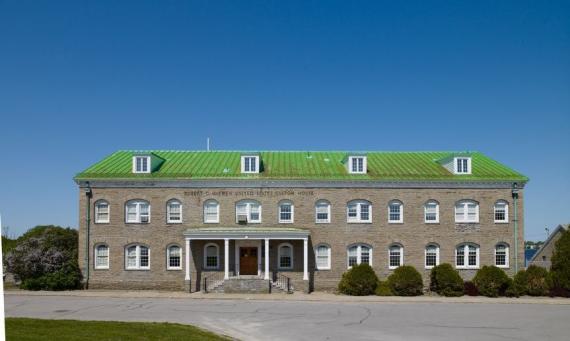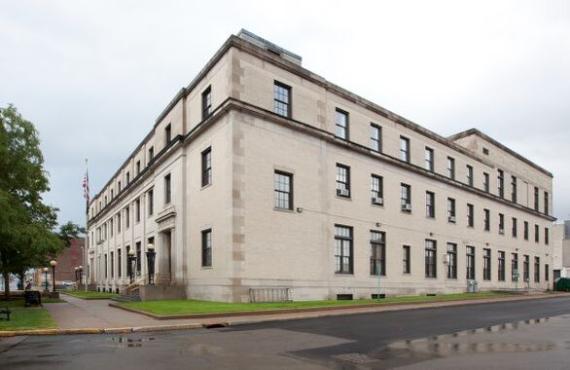GSA’s historic buildings provide a look back at America’s architectural and cultural history
By Amanda Smith
NEW YORK - GSA’s federal buildings provide efficient workspace and real estate solutions for agency customers and partners. But a handful of these buildings offer a glimpse into our nation’s history.

As part of its mission, GSA is responsible for preserving the country’s historic buildings and architectural heritage. Five hundred of the 9,000 federally-owned buildings the agency manages are on the National Register of Historic Places - each with its own architectural style that uniquely reflects the region and time period in which it was constructed.
“PBS Region 2 is committed to preserving the region’s historic buildings and landmarks so they can best serve our federal partners and the American public,” said Regional Historic Preservation Officer David Anthone.
The region is home to 13 federally owned historic buildings and six historic land ports of entry - all are currently on or eligible for the National Register of Historic Places.
The earliest federal architectural designs date back to the early 19th century with the Colonial- Revival style of the Robert C. McEwen U.S. Custom House in Ogdensburg, New York. The building, constructed in 1809 and the oldest in GSA’s inventory, began as a limestone warehouse to house goods before President Franklin D. Roosevelt’s 1935 Works Progress Administration program converted it to a U.S. Custom House.
At the beginning of the 20th century, regional construction consisted of an array of styles including the Beaux Arts design of the Alexander Hamilton U.S. Custom House in New York City, and the Spanish Colonial Revival style of the Jose V. Toledo Federal Building and U.S. Courthouse in San Juan, Puerto Rico. Construction of federal buildings continued under the Public Buildings Act of 1926, which authorized the construction of the Alexander Pirnie Federal Building in Utica, New York and the James T. Foley U.S. Post Office and Courthouse in Albany, New York.

But the region’s heritage and architectural history include more than just federal buildings. In northern New York, six land ports of entry are located along the U.S. - Canadian border. While each is unique, they are all associated with four significant events in our nation’s history: the Prohibition era, which occurred between 1919 and 1933; the 1926 Public Buildings Act; the Great Depression from 1929 to 1933; and the increased availability of the automobile.
In 1919, the 18th Amendment became law, marking the beginning of the Prohibition era and the increased illegal transportation of alcohol at the northern border. Early efforts to curb the activity included customs and border officers on horseback and the construction of New York Custom Houses just south of the border, where travelers were expected to stop and report their purchases. However, the Public Buildings Act of 1926 allowed the government to accelerate its public buildings program. As a result, the federal government authorized the construction of six New York inspection stations to control the alcohol smuggling at the border.
“The Public Buildings Act authorized the U.S. Treasury Department to allocate funds for the construction of New York’s land ports of entry,” Anthone said. “These land ports of entry were an innovative type of building to help enforce Prohibition laws and promote efficiency.”
Today, GSA and the federal government continue to reinvest in historic buildings and landmarks.
“Our region’s land ports of entry and federal buildings provide a look back into our nation’s history,” Anthone said. “Preserving and protecting these structures ensures that history is passed down to future generations.”
To find historic buildings in PBS Region 2, please visit www.gsa.gov/real-estate/historic-preservation/explore-historic-buildings/find-a-building

 U.S. General Services Administration
U.S. General Services Administration